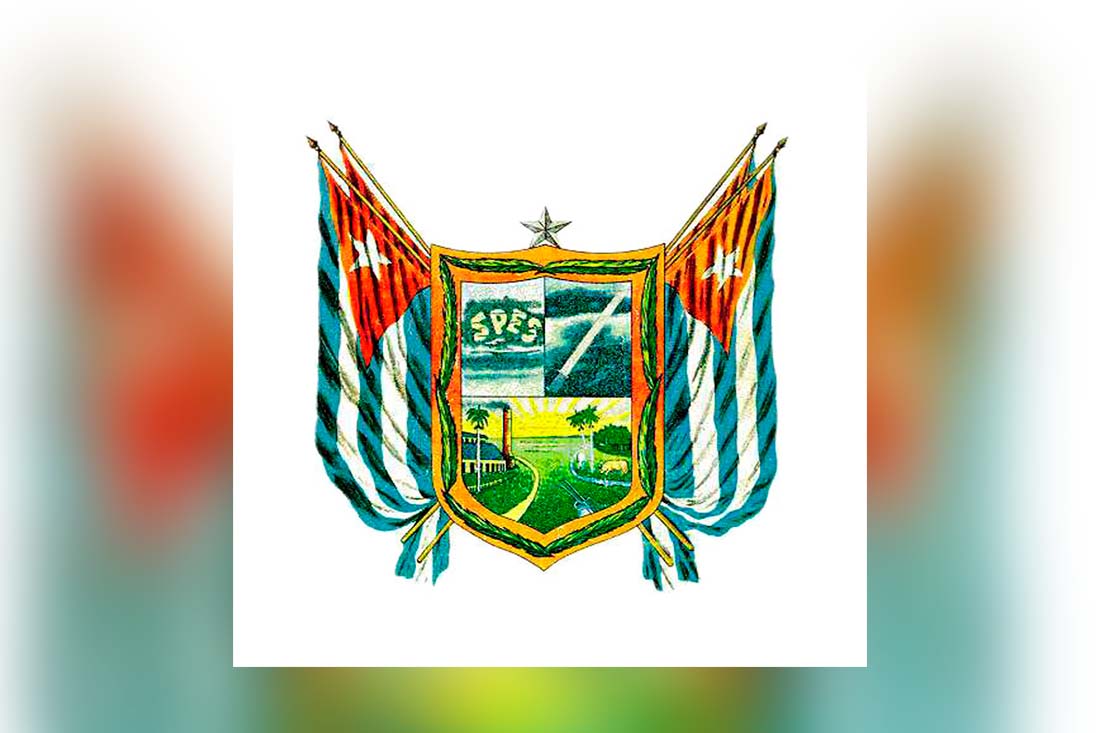This characteristic seemed underlying in the first of the designs made by three Creole intellectuals of this town petitioners of regional coat, a sketch that once received by the chronicler of the Royal House Francisco Doroteo and de la Carrera this would be conveniently modified with the approval of His Majesty, upon being conferred by the Crown the ownership of the city and other attributes to the town of Santa María del Puerto del Príncipe.
Signs of heraldry and elements (lions, towers, lambrequins of royal arms, blue nobility, among others) more in correspondence with the Empire, its representatives complacent with the powerful oligarchy of the Greater Antilles. Even a ducal crown was entrusted as usual for kingdom cities on the Old Continent. No distinctive Cuban sign, nothing of the natural and urban landscape of the award-winning town, which the king never visited.
Furthermore, in our opinion, the certification was late, despite the fact that the town was one of the first aboriginal populations visited by the warrior gang led by Pánfilo de Narváez and Fray Bartolomé de Las Casas, towards the end of the year 1513. We must add not taking into account the armed resistance offered by the urban militia of remnants of aborigines, Africans and Creoles, who resisted the pirate attack against the “small country”, in 1668.
So, such certification was a distinctive fact to puff up and empower more peninsular lobbyists, a fact that the people did not know. Meanwhile, leave in the invisibility that the controllers of the trade in hides, meats and other productions destined for the British and Gauls who would visualize the Espejo de Paciencia, the literary work written by the Canarian poet Silvestre de Balboa, linked to smugglers.
After all, the Creoles until the date that Fernando VII signed the decree, in 1817, were empowered by some 200 hectares of the town in which they would have built a town, built churches and convents and huge houses and without adhering so much to the Hispanic grid, and to do whatever they wanted in the matter of freedoms. Knowing the news of the title by the Creoles, rather it must have seemed to them – as it seems to us -, a generous gesture to thank the support shown by the servile ones of the hatera oligarchy during their French captivity; At a time when there was concern in the kingdom about the political affairs in its “province of Ultramar”, where the liberal movement led by Creole followers of the preaching of the revolutionary priest Félix Varela and on the continent of Bolívar was gaining force.
A shield defending what is ours
That was the shield suggested not by a Creole, but by a cultured and patriotic Cuban. Design that is not at all subordinate to Hispanic heraldry. This became the sign of regional identity marked by the identifying elements of the landscape: the Camagüey countryside, the forest, the sugar cane and its factory production (its author would calculate: “which would give solidity of consciousness and political unity to the proletariat”), the sun of freedom on the horizon, and the instruments of labor.
The lone star is a synthesis of unity. In the upper right barracks the “Machete” wielded by the mambises in the liberating fight. Next to this in Latin Espes which means “Hope”, that of those peoples that feed it with work. Four flags highlight the defense of Camagüey for its rights and its works for Liberty, from 1826, 1851, 1868 and 1895. Everything that makes “its patriotic and historical value and its patriotic personality stronger.” Currencies that the children of Mayor Agramonte will continue to defend.
Translated by: Aileen Álvarez García






